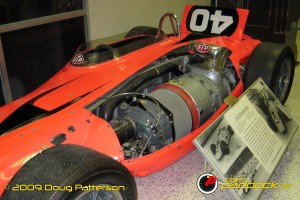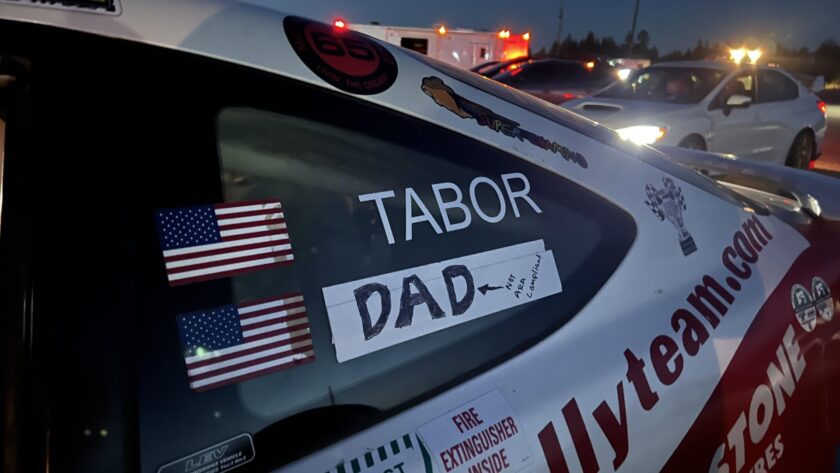Rebuilding the Indianapolis 500 Mile Race
Opening Up The Rules
One aspect of the 500 that drew in crowds of fans, competitors, and manufacturers was that the rules were open enough for teams to build their own car and develop their own innovations. If the current culture of IndyCar racing had existed in mid-20th century, we would never have had seen diesel power, turbo chargers, that amazing gas turbine engine, and most amazing of all no wings.  We would still be running front-engine, naturally-aspirated, carbureted roadsters all made by the same manufacturer. I know there are some that would say, “So? What’s so wrong with that?” What’s wrong with that is that it loses its luster fast. Interest of the casual fan wanes rapidly as they look and say, “Oh yeah, I saw that last year. …and the several years before that” There’s nothing new to come out and see. Seeing the new designs and the new concepts that teams brought to the track was part of the excitement of the event. Sometimes a team struck upon something that worked outstandingly well and put them head and shoulders above everyone else. Dan Gurney’s invention of the rear wing wicker bill, aka Gurney Flap, gave his car a significant advantage. Sometimes a team got things very wrong and a team that was strong the year previous may struggle in the year following. Just look at how the 1995 Indianapolis 500 turned out for Team Penske with their new Mercedes engine. They got things so wrong that they failed to even qualify for the show. If you know anything about Team Penske, you know this was a disastrous result – an UNTHINKABLE result! However, that’s the great thing about allowing innovation; sometimes the teams get it right and are rewarded, sometimes they get it wrong and are punished.
We would still be running front-engine, naturally-aspirated, carbureted roadsters all made by the same manufacturer. I know there are some that would say, “So? What’s so wrong with that?” What’s wrong with that is that it loses its luster fast. Interest of the casual fan wanes rapidly as they look and say, “Oh yeah, I saw that last year. …and the several years before that” There’s nothing new to come out and see. Seeing the new designs and the new concepts that teams brought to the track was part of the excitement of the event. Sometimes a team struck upon something that worked outstandingly well and put them head and shoulders above everyone else. Dan Gurney’s invention of the rear wing wicker bill, aka Gurney Flap, gave his car a significant advantage. Sometimes a team got things very wrong and a team that was strong the year previous may struggle in the year following. Just look at how the 1995 Indianapolis 500 turned out for Team Penske with their new Mercedes engine. They got things so wrong that they failed to even qualify for the show. If you know anything about Team Penske, you know this was a disastrous result – an UNTHINKABLE result! However, that’s the great thing about allowing innovation; sometimes the teams get it right and are rewarded, sometimes they get it wrong and are punished.
Opening up the rules for the Indianapolis 500 doesn’t mean that the rules need to be opened up for the entire series. During the CART years, the Indianapolis 500 not only operated under a different set of rules than did CART, it also ran under a different sanctioning body, USAC. (No, I’m not going to get into the politics of The Split v1.0) The point is that the 500 is a unique event and can be operated under unique rules. Of course, one needs to make sure that the rules aren’t TOO different. The rest of the races during the season are really an Indy500 Road Tour. Fans will want to see cars that they can recognize as definitively IndyCar. Because of that, there must be some constraints, but there must be more innovation allowed than what is currently present.
Safety First
no images were found
Before we get into what rules we can open up, let’s first focus on what things should be standardized. Across the motorsports world, the cars and facilities have become progressively safer than they were in the past. This is a great thing! As race fans, we like excitement, but no one likes to see someone get seriously hurt. Understand that running with your butt a couple of inches off the tarmac at 230+ mph is by definition unsafe, but there are things that have evolved over the years that have greatly reduced the risk to drivers and to spectators. I’ll not get into the personal safety gear worn by the drivers, although I think we can all agree that the HANS device is brilliant and an absolute must for any driver regardless of the series. With regards to the car itself, it’s whole appropriate, right, and proper for the league to mandate a standard tub and side-intrusion panels. The improvements in the design of the core tub of the current Dallara and the side-intrusion panels have helped a number of drivers survive some truly brutal incidents. Just this year, Vitor’s crash at IMS, and the Power/Philippe incident at Sear’s Point would have been devastating and life-threatening just ten years ago. Wheel tethers are also a must for any car design. The last IndyCar race at Charlotte should be evidence enough for that. Further, one should mandate the use of proper bladder-style, puncture-resistant fuel cells. Again, I don’t think anyone will argue with this. 1964 is argument enough. These standardized features of any car design will help keep our favorite drivers around for us to cheer on for years.Once the safety of the cars is secured, I say let the team engineers and manufactures loose!
no images were found
Nothing spurs excitement in motorsports more than innovation. Yes, you can make the argument that good racing is paramount, and I will agree that it is vitally important, but if you keep pushing the same product in front of people year after year, race after race, you will begin to see a steadily dwindling interest even if the racing is good. Consistently good competition works for some stick-n-ball sports. NFL football is an excellent example of this. The game hasn’t changed in decades, yet they still have a huge following. Motorsports isn’t like this. There’s more to the appeal of motorsports than just the pure competition between drivers. If good racing is all it took, then the Firestone Indy Lights series should be top of the heap! They have outstanding racing in that series! …but of course, its not enough is it? In order to survive at the top-most level, it takes more than good racing, it takes innovation. I’ll have more on this tomorrow.Got different ideas? Let’s discuss it in the Forum or in the comments section below.



